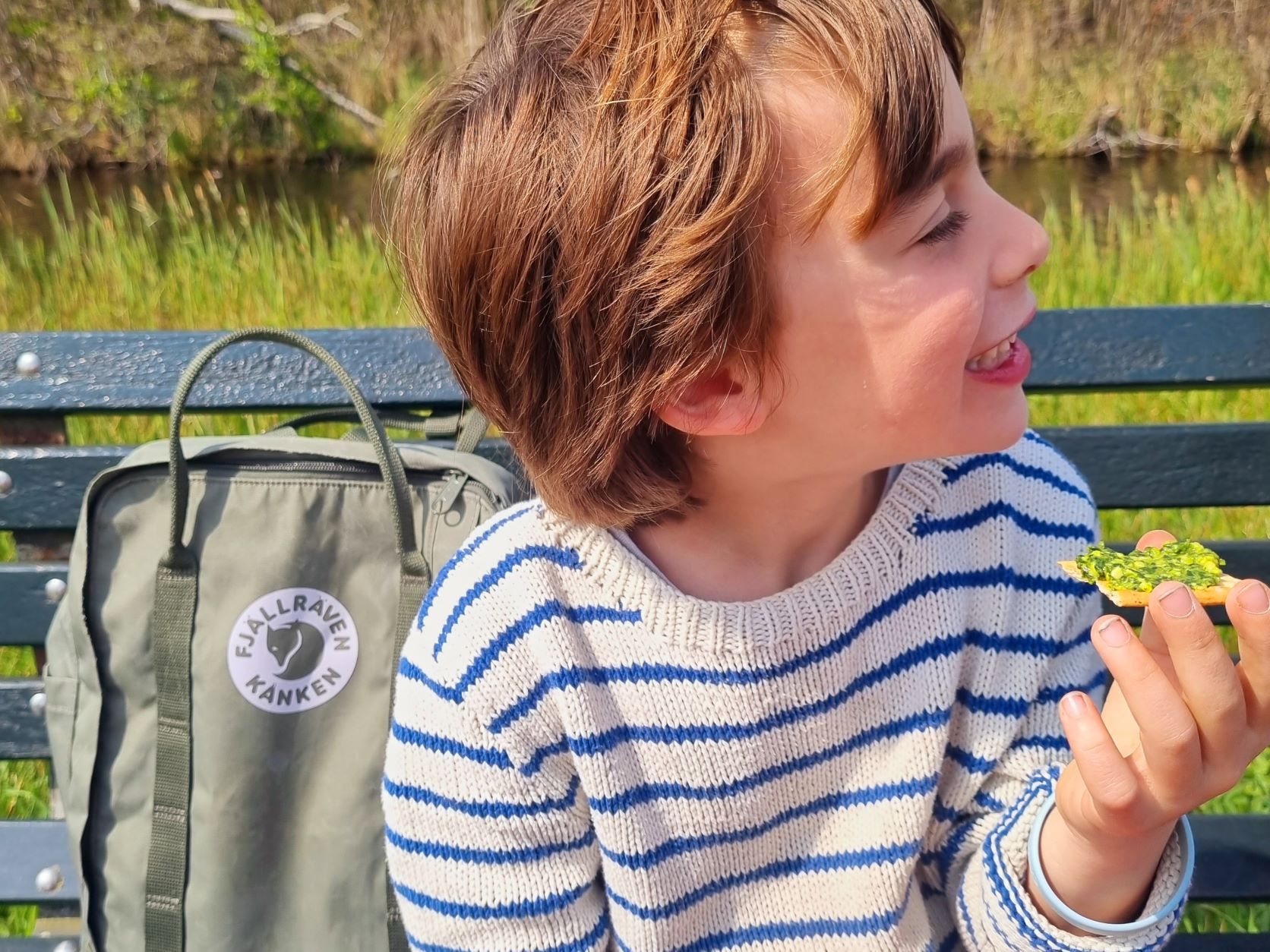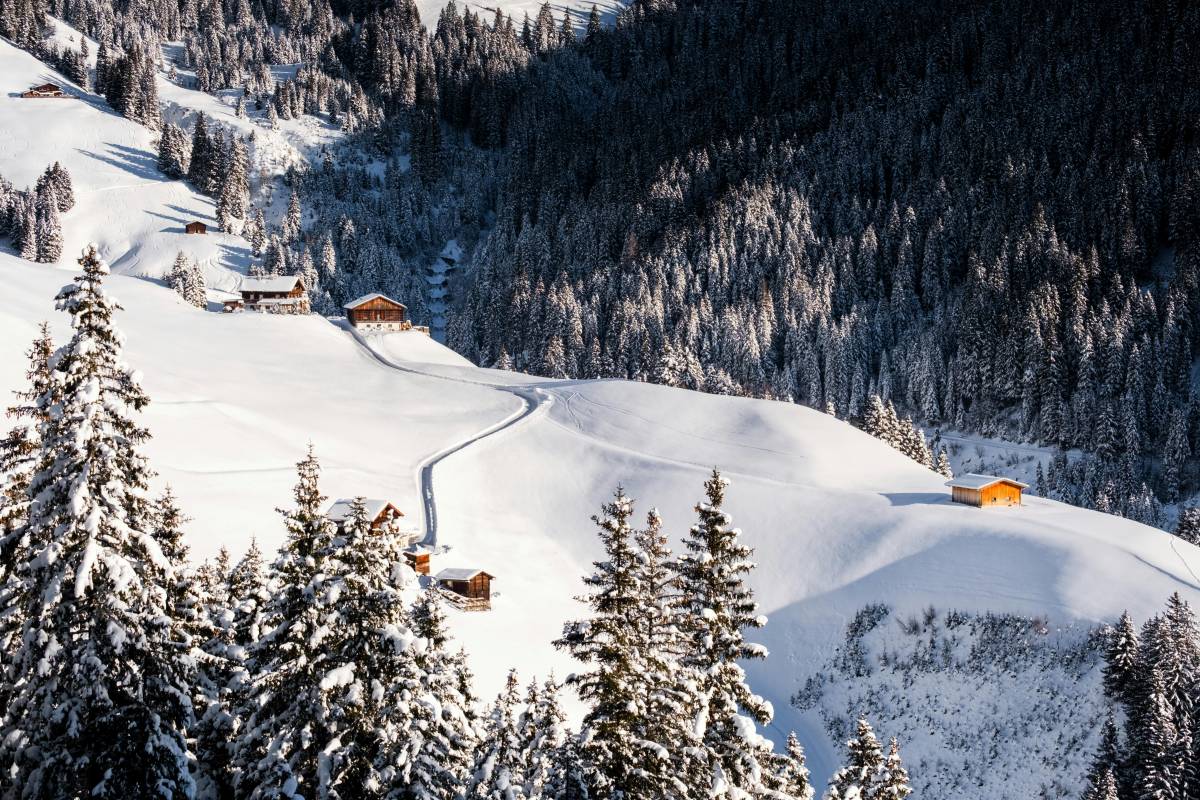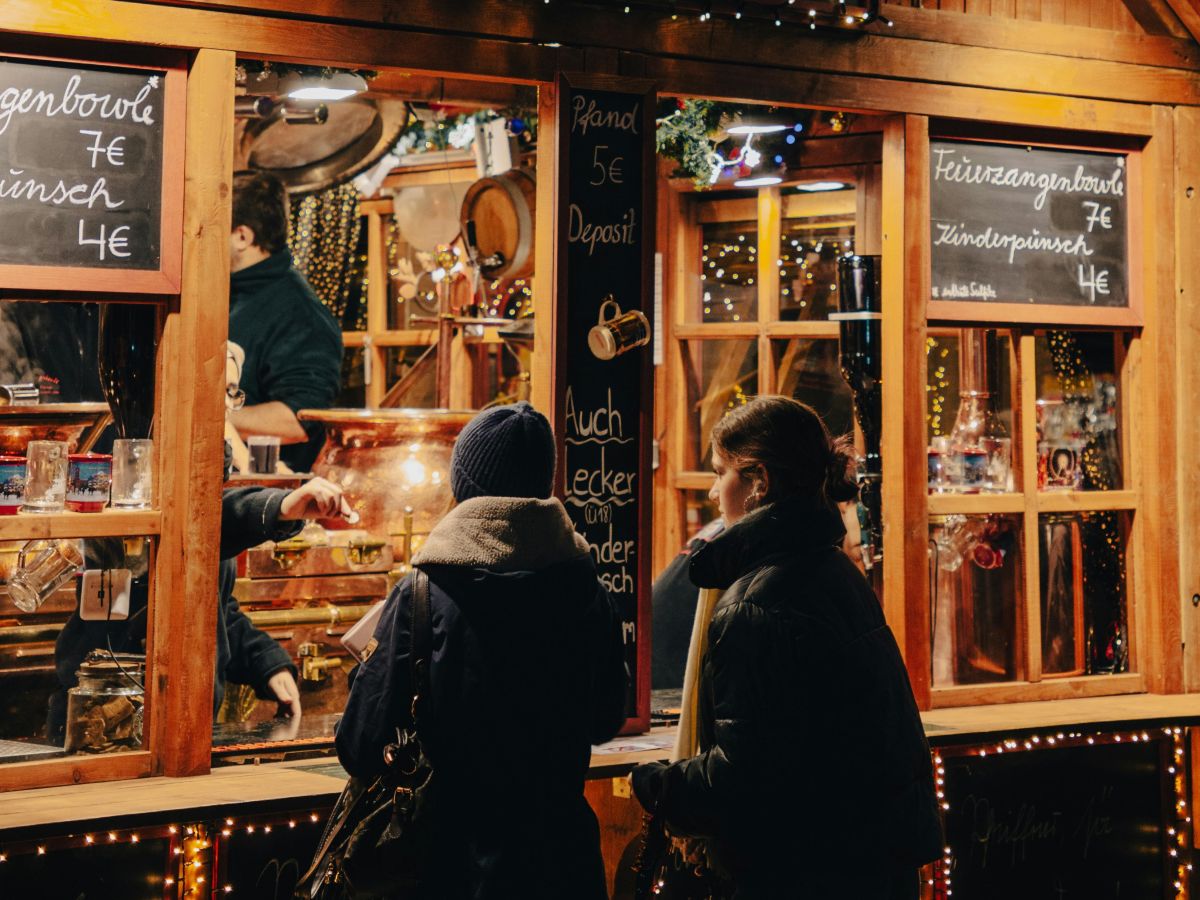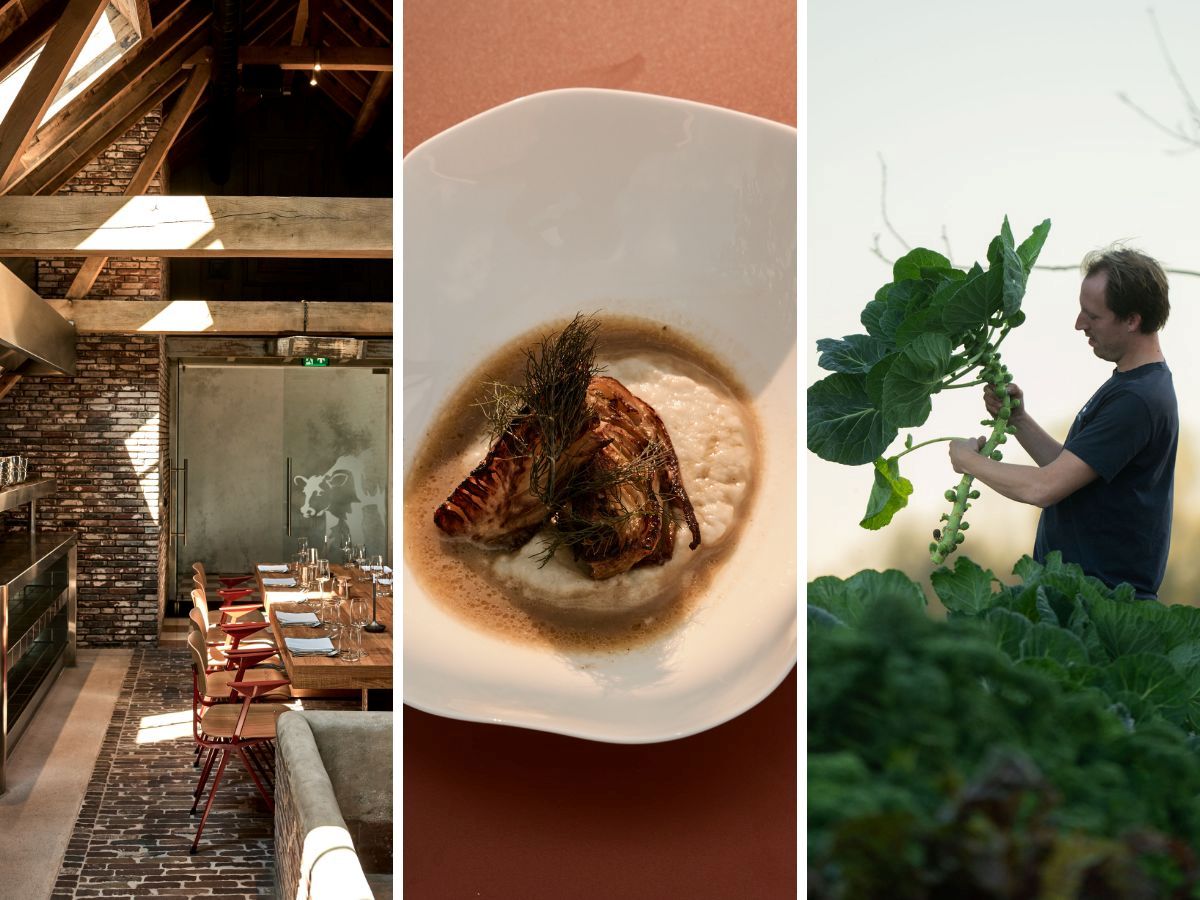Wild-picking and learning more about edible plants had been at the top of Saskia's bucket list for some time. Time to do something about it! And so she did a wild-picking walk in the Amsterdam forest with Katja Wezel of Wilderlust. She knows everything about edible plants, flowers, berries and mushrooms and organises game-picking walks across the country.
On a game picking walk?
Dandelion, daisy, nettle, cabbage seed, ground elder, plantain: all kinds of plants and flowers grow around us that you can eat and, in many cases, are very healthy and even healing. I would like to learn more about that, but only under the guidance of an expert. And so I went on a wildflower picking walk with my family. In two hours we took a beautiful walk through the Amsterdam forest and learned all kinds of things about the plants I normally wouldn't look at. Since then, I take a completely different look at the little park in our neighbourhood that I regularly pass on my way to the supermarket. Suddenly I spot all kinds of edible specimens in my own street! And all thanks to this fun afternoon in the Amsterdam forest.
Wild-picking walk in the Amsterdam forest
Our nature guide Katja knows all about medicinal plants and flowers: ‘I have always had a great love for nature. From an early age, I could be found in the forest, out and about with my grandmother and mother, looking for edible mushrooms and berries. In recent years, I have immersed myself in edible and medicinal plants and flowers, I am involved in this every day and love nothing more.’ Katja likes to convey this love for nature to people by organising wildflower picking walks and online wildflower picking courses that you can do yourself at home.
Edible and medicinal plants
During a two-hour walk with Katja, you will learn to recognise common edible species, get tips on how to incorporate them into meals and also what medicinal effects these plants have. And that plants really can have a healing effect is something I immediately experienced myself. I had a painful cuticle that had burst and on Katja's advice I put plantain on it. Within two days the wound had healed and the skin had healed again. That would normally take much longer. The walk ends with a little tasting. Katja showed us a home-made tapenade of wild garlic and a non-alcoholic champagne made from meadowsweet, this plant growing abundantly on the waterfront. The snack and drink were blissful! Can we also buy it and take it home? Unfortunately, for that you have to go into the woods yourself.....









Wild-picking walk with tasting. While out with Katja, you suddenly see edible and medicinal plants like plantain and mushrooms everywhere under a fallen tree trunk. The purple flower is an edible cuckoo flower and Frank shows (photo 4) that ground elder on celery seems.
List for the novice game picker
Even with little plant knowledge, you can quite easily (and safely) spot some nice plants and flowers you can use in recipes during a walk. I share the nicest wild-picking tips Katja gave during the walk:
- Look-without-look: Onion-leek-like flavour. Contains four times more vitamin C per gram than oranges. Mustard can be made from the seed. Delicious in pestos or hot savoury dishes. And the root tastes like horseradish!
- Deadnettle: a woman's herb, soothes menstrual cramps and helps against excessive bleeding during menstruation. Has an earthy taste. Katja likes to use it in an omelette or quiche.
- Stinging nettle: is chock-full of vitamins and minerals and good for a lot of things! Acts as a blood cleanser, anti-inflammatory and resistance booster, among other things. A nettle tempura Katja can recommend. Ugh, that certainly sounds good.
- Rapeseed: is full of mustard glycosides, which give the spicy cabbage-mustard-like flavour to the plant and contains many antioxidants. Tip: blanch as a type of broccoli.
- Dogweed: Good for coughs and bronchitis. Use this little plant as an herb, in small quantities. It is delicious in herb butter!
- Veldkers: Very nice little plant, you can compare this to garden cress. It is full of minerals and vitamin C. Delicious on a sandwich with hummus or old cheese.
- Dandelion: this flower has superpowers and you can delicious lemonade or honey of it. Dandelion is a strong liver cleanser that simultaneously gets the kidneys working to remove waste products from the body.
- Ground elder: this is related to celery and parsley. It grows very fast, which is why people with gardens are not fond of this. And yet it is a super healthy little plant that is full of vitamins A and C, antioxidants, proteins and minerals. Katja likes ground elder almost everywhere, as it has the taste of parsley/carrot/c celery. You can use it as a kind of spinach, but also in pestos, savoury pies and stir-fries are a treat.
- Elder: the blossom of elder stimulates the immune system and has a soothing effect on the mucous membranes, among other things, so good for sore throats and coughs, for example. Tempura of the elderflower leaves (with icing sugar or soy sauce) are a real treat! Check out our elderflower lemonade recipe here.
- Pentecostal flower: like rapeseed, is related to broccoli and Brussels sprouts. It tastes a bit like marzipan. The beautiful purple flowers also look very festive. They are rich in vitamin C.
- Daisy: this flower is also edible, healthy and super cosy. Only the taste is a bit bitter. This flower is a treat to brighten up your breakfast, soup or salad. Has a soothing effect on the skin when applied and is wound-healing.
- Badger garlic: Smells like garlic and that's how it tastes too. Delicious in a pesto. Rich in iron and vitamin C too and thus has a positive effect on the immune system. We also made ramson salt and garlic butter along.
- Meadowsweet: the natural aspirin. Works as an analgesic and fever reducer, among other things. Smell is honey-almond-like but some also find it medicinal/to smell like plasters. You can make a delicious syrup from the blossom, which in turn can be used to make lemonades, cocktails or ice cream.
Beware of poisonous plants
Katja stresses that it is important to educate yourself well before you decide to go wild picking. Katja: ‘Start with easy species and learn to recognise poisonous plants. You have to take this very seriously, because some poisonous species are similar to edible ones. Take fluteswort, for example. This plant is a well-known edible plant. And yet I would not start with just such a plant, because cow parsley has some very poisonous brothers.’ During the walk, Katja also tips her plant bible: ‘the book Edible wild plants is indispensable for any game picker, as far as she is concerned. ‘I still use the guide daily. Beginning wildpickers I always advise to go through the last section on poisonous plants thoroughly first.’
Safe game picking
- Pick only if you are sure it is an edible species. (For determination purposes, it is sometimes useful to pick something. In that case, pick only what is necessary for proper determination).
- Always take a field guide with you to identify species.
- Make sure you have several game picking books at home so you can compare found varieties.
- Always take a charged phone with you to access the internet or a plant app.
Ban on game picking
It is essential to know what you are picking. For example, the ramson, like cow parsley, also has a poisonous double. And that actually applies to a lot of little plants. Besides, wild picking is officially forbidden in the Netherlands, it is tolerated. It is important to stick to a number of wildpicking rules so that we can all continue to enjoy nature.
- You do not pick vulnerable/endangered plants.
- You don't pick plants where there are few of them together.
- You don't pick in protected areas.
- A guideline is: do not pick more than one mushroom box for your own use (only exception is elder).
- Always pick with love and respect for nature and the environment.
- Pick only what you will use.
- Cut or trim the plant carefully and mindfully so that it can simply continue to grow.
- Be kind to the animals, don't disturb them to get your game pick.
- Always leave nature more beautiful than you find it. For example, see a stray piece of plastic lying around during your walk? Take this with you to throw away.
Also on a wild-picking walk?
Katja organises wild-picking walks and online wild-picking courses with her company Wilderlust. The walks often take place in the Amsterdam area, but Katja can also come to you throughout the Netherlands by appointment. A wildpicking walk also seems like a super fun birthday present or team outing! See more about Wilderlust.
More green out tips from thegreenlist.nl
- Haarlem with children: these are the best sustainable getaways!
- Sustainable shopping and walking in a beautiful part of Amsterdam: Do the Green Light District Walk.
- Also an original and sustainable outing: sustainable textile dyeing workshop!
- Just relax: a unique and lasting experience at wellness resort Fort Resort Beemster.
Photo credits: thegreenlist.nl.












